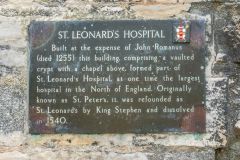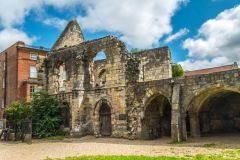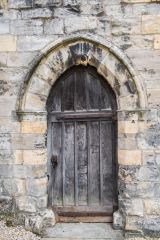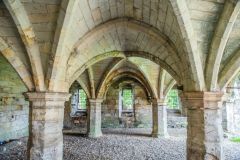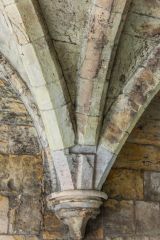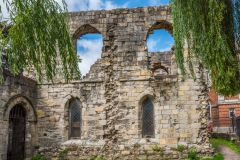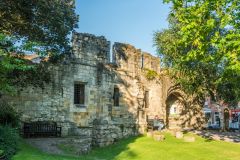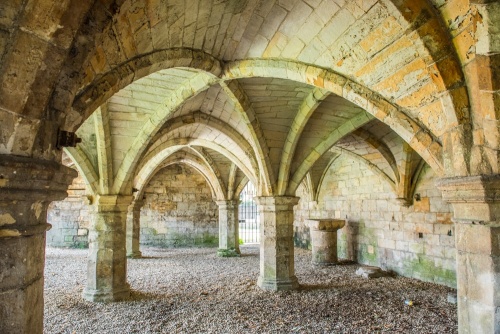
Tucked into the north-eastern corner of Museum Gardens in York are the ruins of what was once the largest and most important medieval hospital in northern England. The ruins occupy the western corner of the Roman fortress of Eboracum.
History
According to tradition, the hospital was established by King Athelstan around AD 937. It disappears from the historical record until William II built a chapel here dedicated to St Peter. Henry I followed with a grant of building materials, but it seems that the hospital building was destroyed by fire in 1137.
King Stephen rebuilt the hospital church and dedicated it to St Leonard, though the hospital itself was called St Peter's for another century.

In the middle of the 12th century a large building with a vaulted undercroft was erected near the eastern boundary of the hospital precinct. You can see the fragmented remains of this building at the Theatre Royal site on St Leonard's Place.
The remains in Museum Gardens are probably part of the hospital infirmary, built by John Romanus, the Treasurer of York Minster, sometime between 1325 and 1350. The best-preserved part of the ruins is the beautifully vaulted undercroft that supported the infirmary, and a long gatehouse passage into the hospital precinct. Part of the hospital chapel remains, including a lovely three-light window.
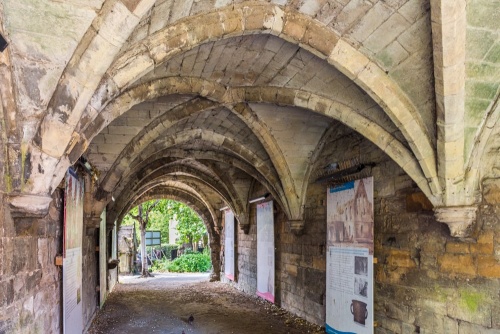
Life in St Leonard's Hospital
In the medieval period, a hospital had a different function to the one we think of today. It was more than just a place to heal the sick, it was a place for spiritual as well as physical care for the ill, the infirm, the poor, and the elderly. Patients were clothed, fed, cleaned, and given a roof over their heads. In return, they were expected to attend religious services daily and to confess their sins before receiving medical treatment.
Records show that life at St Leonard's Hospital was akin to a monastery. The hospital was run by 13 chaplain brothers who followed the rules of the Austin Canons (the Augustinians). They were aided by eight regular sisters, lay brothers, 30 choristers, and servants.
The scale of the operation was staggering by the standards of medieval England; there were 206 beds for patients. The beds were given by private benefactors.
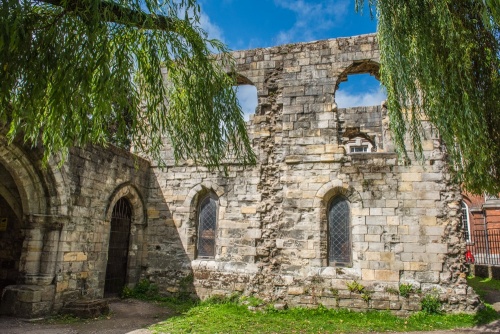
In 1346 the space under the infirmary was converted for use as a nursery for young children. The hospital operated a grammar school offering instruction to choirboys, boys in the hospital's own orphanage, and paupers living on land owned by the hospital.
As a religious institution the Hospital fell victim to Henry VIII's Dissolution of the Monasteries. For the next 200 years the city of York had no hospital.
The site was granted to Sir Arthur Darcy in 1544 by Darcy sold it back to the Crown two years later. The crown made good use of the site; the royal mint was moved from York Castle to the Hospital and operated here until 1553.
In 1629 the mint was reopened, then moved to St William's College in 1642. Over the centuries the hospital buildings were used as a stable, a boatyard, and as an air raid shelter.
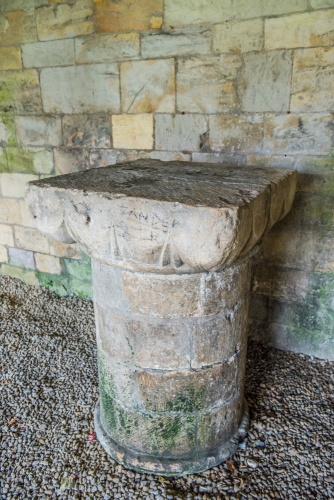
capital in the undercroft
Some of the medieval hospital buildings were pulled down when Museum Street was widened in 1782. More were lost when St Leonard's place was built in 1832.
Carved stones from St Leonard's Hospital are on display in the Yorkshire Museum, a stone's throw away in Museum Gardens.
St Leonard's Hospital appeared in Channel Four's popular Time Team programme in 1999.
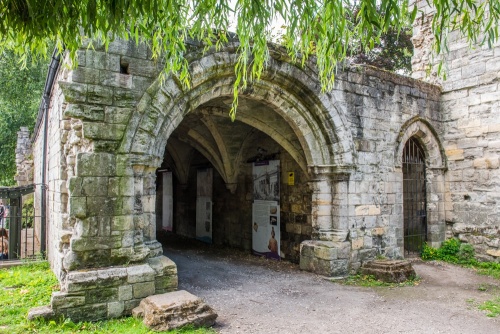
Getting There
The hospital ruins stand in the corner of Museum Gardens bordering Museum Street. From Museum Street you can enter the park and walk through the vaulted passage that was one of two entrances to the medieval hospital.
To access the undercroft you have to walk through Museum Gardens to the Multangular Tower and go through a doorway in the city wall. This takes you to an open space behind the tower. From here you cross a lawned area to the undercroft.
The undercroft vaulting is exceptionally well preserved. Inside this area is a large truncated column with a worn capital in 12th-century style. The column is round, unlike those that actively support the undercroft roof, which are polygonal. The column capitals are extremely simple, with very little carving, and the corbels are also very simply carved.
About St Leonard's Hospital
Address: Museum Gardens, Museum Street, York,
Yorkshire,
England, YO1 7DT
Attraction Type: Historic Building
Location: In the north-eastern corner of Museum Gardens, bordering in Museum Street. Access through the Gardens, which are open daylight hours.
Website: St Leonard's Hospital
Location
map
OS: SE600520
Photo Credit: David Ross and Britain Express
POPULAR POSTS
HERITAGE
 We've 'tagged' this attraction information to help you find related historic attractions and learn more about major time periods mentioned.
We've 'tagged' this attraction information to help you find related historic attractions and learn more about major time periods mentioned.
Find other attractions tagged with:
NEARBY HISTORIC ATTRACTIONS
Heritage Rated from 1- 5 (low to exceptional) on historic interest
Multangular Tower - 0 miles (Roman Site) ![]()
York, St Helen Stonegate - 0.1 miles (Historic Church) ![]()
Yorkshire Museum - 0.1 miles (Museum) ![]()
St Wilfrid's Catholic Church - 0.1 miles (Historic Church) ![]()
Museum Gardens - 0.1 miles (Garden) ![]()
King's Manor - 0.1 miles (Historic Building) ![]()
York Guildhall - 0.1 miles (Historic Building) ![]()
York Minster - 0.1 miles (Cathedral) ![]()
